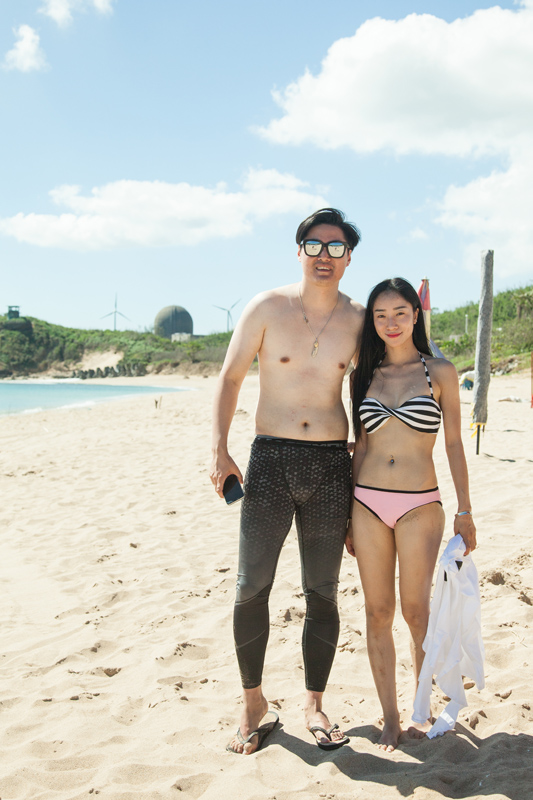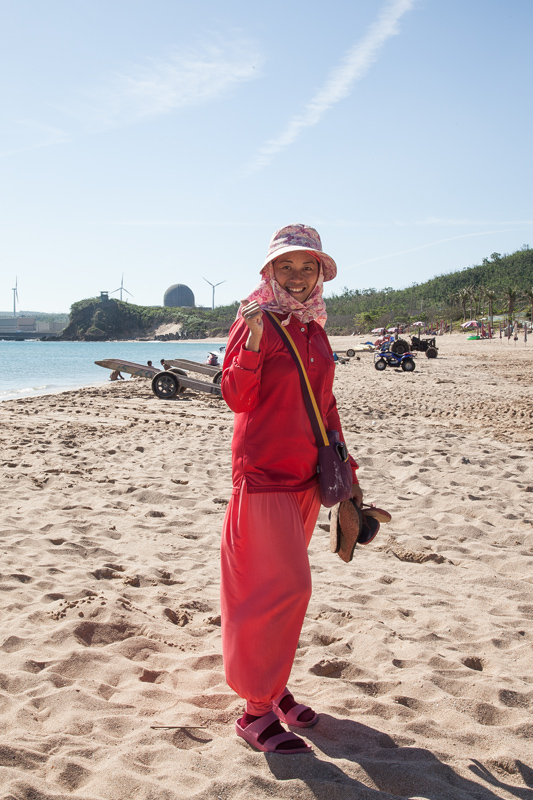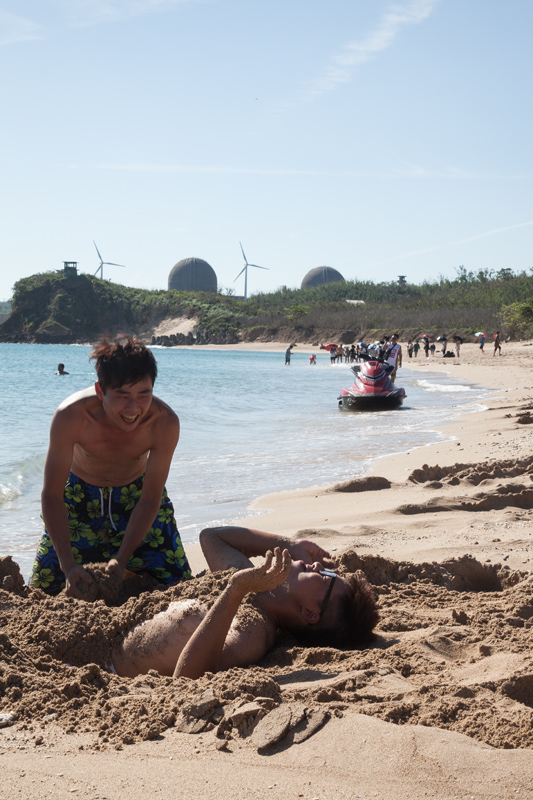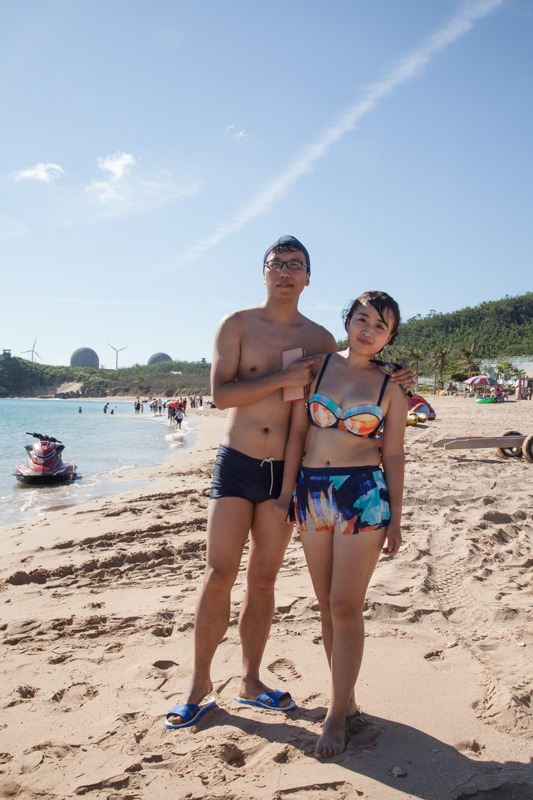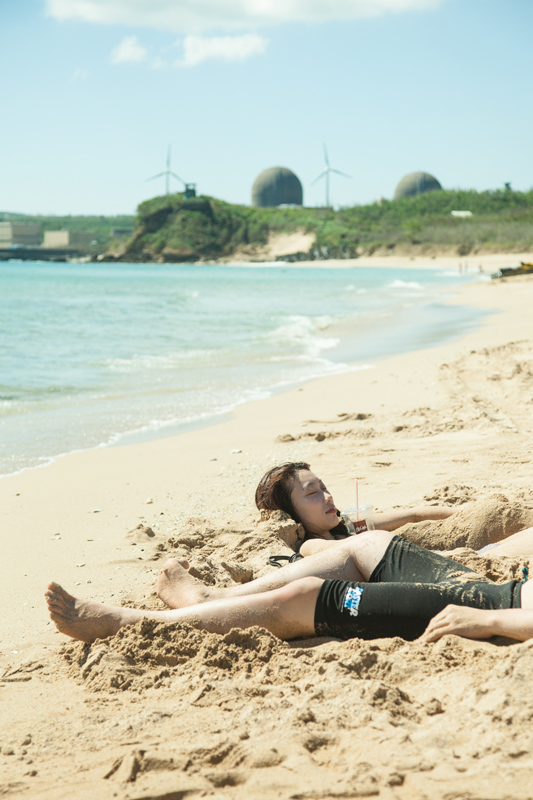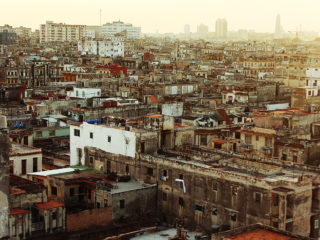Winding roads, turquoise water and white paradisiac beaches in the South of Taiwan attract more than 3 million visitors each year.
Like Nanwan Beach – one of the most popular beaches right at the border to the Kenting National Park.
Little, colorful umbrellas and banana-boats can barely distract from the daunting, vast silhouette in concrete –
the nuclear power plant Maanshan, one of the 3 active nuclear plants in Taiwan.
Taiwan is situated in the Pacific Ring of Fire where a large number of earthquakes and volcanic eruptions occur.
Fukushima is also located in this zone with a very high seismic activity.
The water looks tempting, crystal clear.
Estimated 200.000 people/year enjoy a bath with this atomic view.
The seawater is led through the plant to cool the reactors. As a result the sea temperature at Nanwan Beach is 34 -37.4 Fahrenheit (1-3°C) higher than beaches in the close area.
Unburdened kids and adults frolic in the water. Peels of laughter from people falling off the banana-boat and roaring jet-skis.
Snorkeling and Surfing are popular activities at Nanwan.
You can even book an organized diving tour to the drainpipes of the Maanshan nuclear plant.
Although in this particular case the cooling water should not have any contact with higher radiation
(supposed the nuclear plant is in perfect condition), global studies show a significantly higher cancer rate of people living close to nuclear plants.
Especially children are affected with an enhanced risk to develop leucemia caused by the low-level radiation a nuclear power plant emits.
Maanshan has a long list of accidents and failures that occurred in and outside the nuclear plant. The documentation is all but transparent.
In the past scientist linked local coral-bleaching with the nuclear power station.
Anti-nuclear activists criticize the sensitive location of the nuclear-plant for decades.
In 2014, 3 years after the tragic accident in Fukushima, 200.000 Taiwanese anti-nuclear protesters and the hunger-strike of well-known activist Lin Yi-hsiung eventually caused politicians to block the construction of the 4th nuclear power plant in Taiwan.


